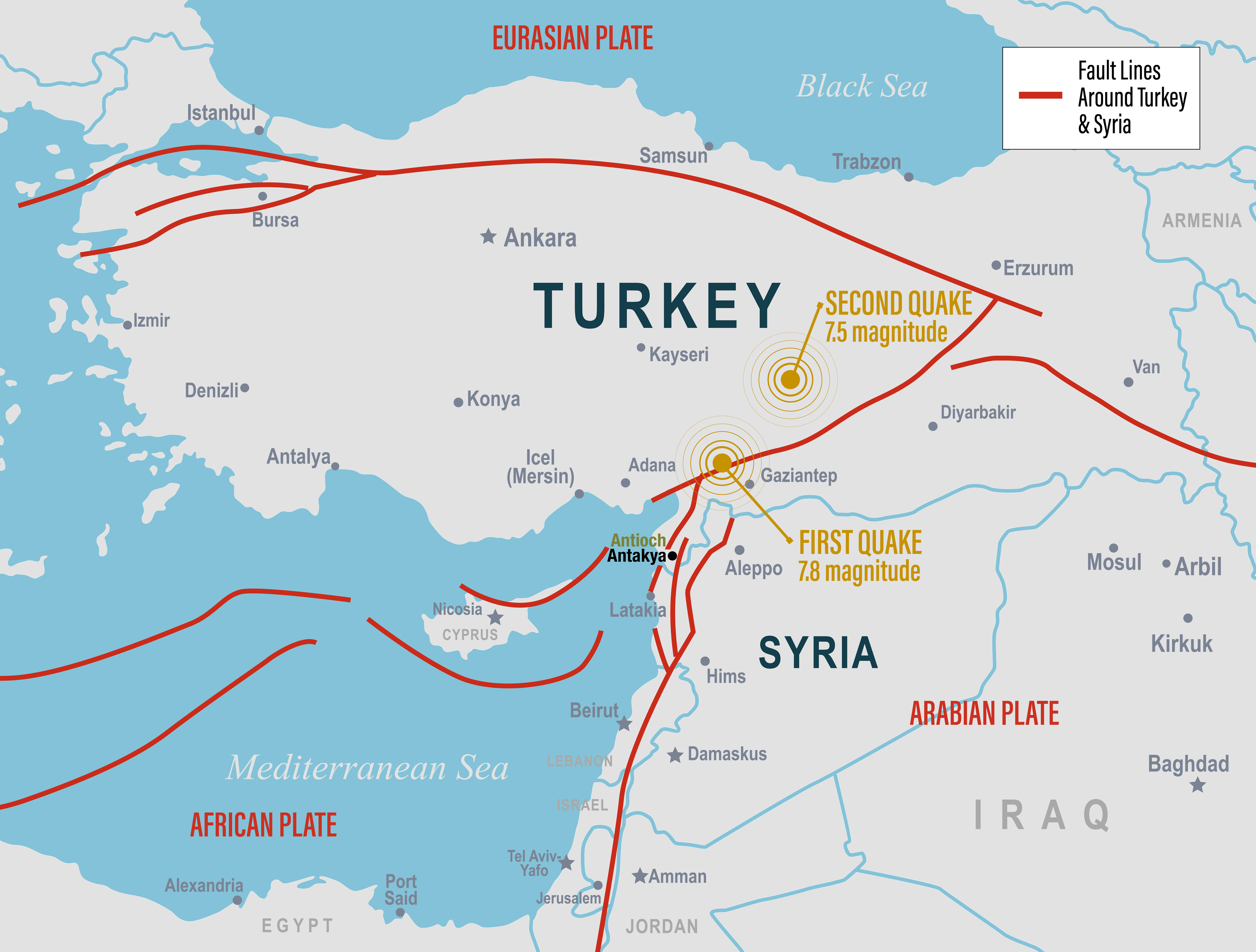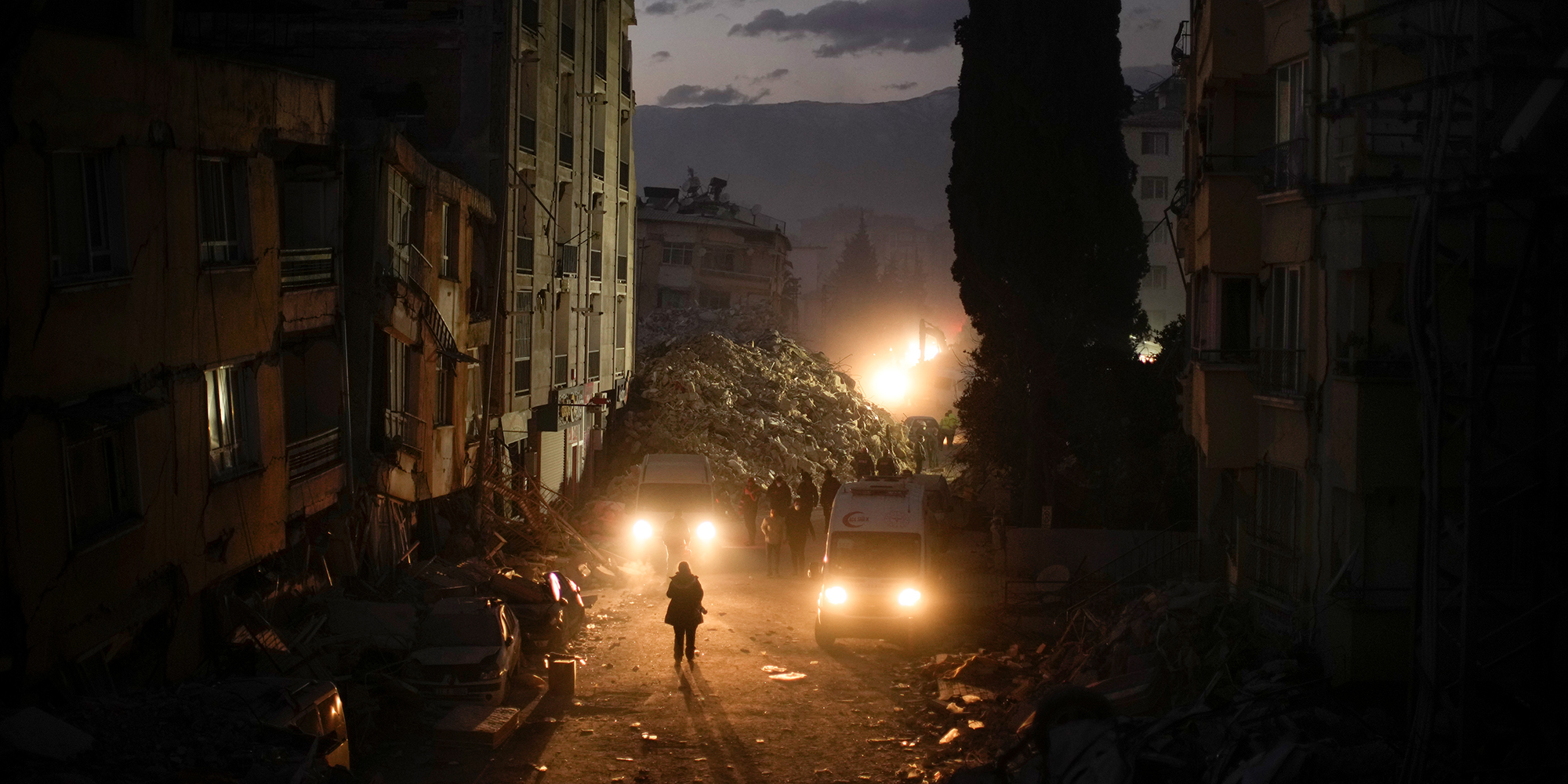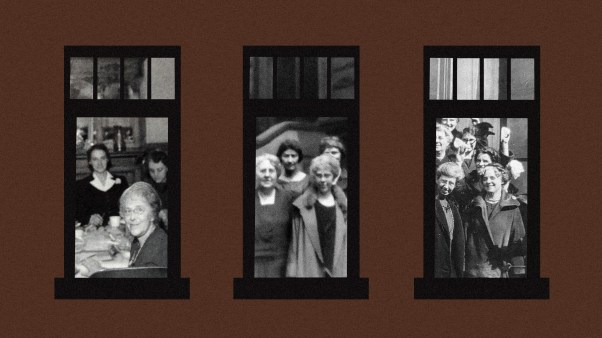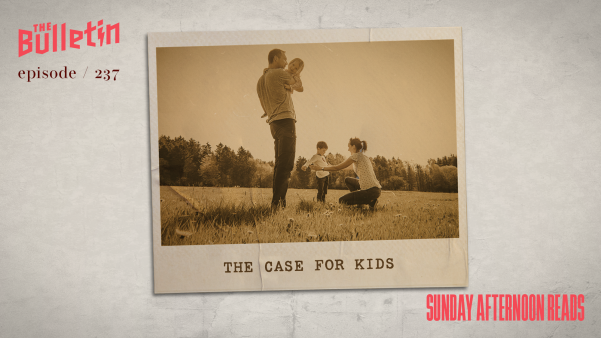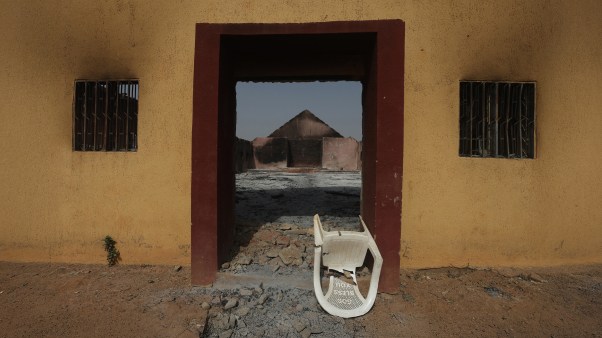Up until early February, tourists to the Turkish city of Antakya could find various types of archaeological and cultural treasures. The site of numerous Christian legends about the famous apostle, the Grotto of St. Peter, a church built into a cave in the fourth or fifth century, sits nearby Neccar Mountain.
In 2010, workers uncovered a city block’s worth of 30,000 artifacts, including a Roman bath, and the world’s largest single-piece floor mosaic, one displaying a noticeable ripple from an earthquake in the sixth century AD. A museum opened displaying these finds in 2020.
Despite 99 percent of Turkey’s population identifying as Muslim, the city also included a Greek Orthodox church, rebuilt after an earthquake in 1872, a Catholic church, and a modern synagogue, all on streets once paved by Herod the Great.
Christians know this city as Antioch, a place that the apostle Paul held close to his heart and whose name many churches and ministries have taken as their own. However, in contrast to a site like Ephesus, archaeologically minded Christian visitors would find little to see, as the modern city was built on top of the ancient one. The visible ruins were limited to sections of fortification walls above the city and foundations of an aqueduct. Only a visit to the harbor at nearby Seleucia provided any tangible connection to the biblical world, as here the apostles set sail for Cyprus.
Today, most of these wonders have been impacted after two earthquakes (7.8 and 7.7 respectively) struck southeastern Turkey and northern Syria on February 6. More than 50,000 have died, and just as rescue efforts had ceased and cleanup had begun, two more earthquakes, measuring 6.4 and 5.8, struck outside Antakya on February 20.
The intensity and concentration of earthquakes has all but wiped out the city. Antakya is largely rubble, and the buildings still standing have been deemed unsafe. Insecure even in temporary shelters and with food, water, and medical care in short supply, people have begun to flee.
Throughout its history—one that began centuries before Christ’s birth—Antakya has come back after numerous disasters. Perhaps its resilient history will give its residents strength as they attempt to restore their ancient home.
Origin story
In 300 B.C., Seleucus I Nicator, a general who served under Alexander the Great, founded a city on what’s now known as the Asi River (previously Orontes). Named for the leader’s father, Antiochus, it became the most famous of the 16 Antiochs in the ancient world.
The site promised a flourishing future for its inhabitants: To the east, Mount Silpius served as a fortification wall; to the west, the Mediterranean Sea offered trade and commerce; and in-between, the valley boasted fertile land for crops and orchards. But these distinct advantages came with a catch: Little did Seleucus know that his chosen location sat atop the Dead Sea fault line. Despite the Greek goddess of luck, Tyche, serving as the patron deity of the city, time after time, earthquakes leveled Antioch.
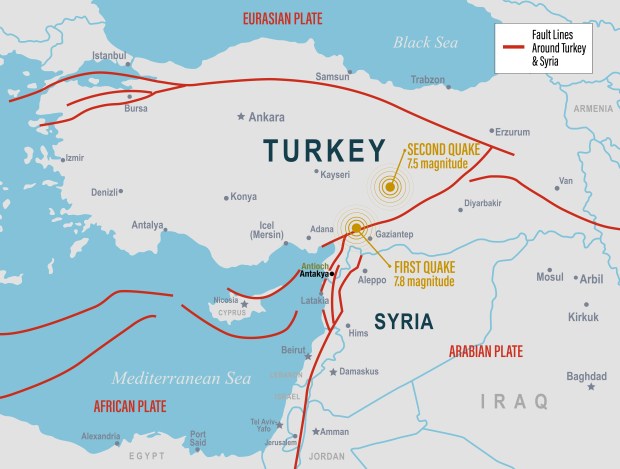
When not in the aftermath of a geological disaster, Antioch became a transportation hub between the Mediterranean and Mesopotamia and from Egypt and Judea to Asia Minor. The Seleucid Empire’s capital until 64 B.C., Antioch was subsequently incorporated into the Roman Empire by Pompey the Great and named the capital of the province of Syria. In its new status, it became the third-largest city in the Roman Empire, with an estimated population of more than 250,000 people. Its inhabitants were multiethnic and multicultural, a feature of the city that has continued throughout its history to the present day.
Antioch’s diversity also included a Jewish community. Though they largely flourished under the Seleucids, the injustices they experienced during that time stayed with them forever. Around 168 B.C., Antiochus IV Epiphanes forbade circumcision, confiscated Torah scrolls, and forcibly sought to Hellenize (acculturate to Greek social and religious practices) the Jews of the eastern Mediterranean. A local tradition holds that a mother and her seven sons were martyred at the time for refusing to eat pork. Their martyrdom, recounted in 2 Maccabees 7, had a profound impact on later Jewish and Christian views of resistance and martyrdom.
A year later, the Seleucid ruler ordered his troops to storm Jerusalem and to desecrate the temple by sacrificing a pig on its altar, the abomination of desolation prophesied by Daniel (9:27; 11:31). These acts provoked the Maccabean Revolt and Antiochus’s defeat in the subsequent year. The cleansing of the temple and restoration of the altar are still commemorated by Jews annually at Hanukkah.
Ironically, it was Antiochus who brought Jews to Cilicia, the southern region of what is now Turkey, with the intention to reestablish cities there. (It’s possible that Paul’s ancestors settled in Tarsus, Cicilia’s capital, during this time.)
When the Jewish revolt began in Judea in A.D. 66, local officials in Antioch retaliated by massacring Jews. After Roman emperor Titus captured Jerusalem in A.D. 70, he celebrated his triumph in Antioch, taking the bronze cherubim from the destroyed temple and erecting them on the Daphne Gate near the Jewish quarter.
Because of its geographic proximity to both the east and west, Antioch wielded significant cultural and political influence throughout the Roman Empire.
“In what land or sea had the fame of this city not entered?” asked Libanius, a third-century instructor at a philosophy school in Antioch. “Attractions of all kinds bring people from all sides [of the empire], from Africa, Europe, Asia, from the islands, from the mainland.”
No place like home
Because of its prominence in the Greek East, Jewish converts from Cyprus and Cyrene targeted Antioch in the early 40s as a place to preach the gospel in its synagogues. When news reached the church in Jerusalem that many had believed in Antioch, Barnabas was sent to encourage the new believers, in what became the first of many journeys covering the approximate 375 miles between the two cities.
Realizing that he needed assistance with the burgeoning group of disciples, Barnabas made the three-day journey to Tarsus to find Paul. Their partnership began in Antioch and oversaw a growing congregation called “Christians” by their pagan neighbors. (Whether this term was meant to be pejorative is debated, but it stuck to designate followers of Christ, even through today.) The arrival of these apostles from Jerusalem prompted the first Christian cross-cultural act of relief. When a Christian prophet named Agabus prophesied that a famine would strike Judea, the church in Antioch took up a collection to help the believers there, sending aid through Barnabas and Paul (Acts 11:19–30).
In A.D. 46, the early church experienced a tipping point. Prophets and teachers in Antioch were fasting and praying when the Holy Spirit directed the church to set aside Barnabas and Paul for ministry throughout the region. After the church laid hands on them, the duo, along with John Mark, traveled down to Seleucia to begin the first journey. After successful church planting in Cyprus and in the province of Galatia in Asia Minor (modern Turkey), the apostles returned to Antioch to report their success among the Gentiles (Acts 13:1–14:28).
Controversy soon broke out in the Antioch church about whether Gentiles needed to be circumcised and obey the law. Around this time Peter paid the city a visit (ca. A.D. 47–48). Swept up in this controversy, the apostle, along with Barnabas, drew back from eating with the Gentile believers, causing Paul to rebuke Peter for his vacillation (Gal. 2:11–14).
Realizing that the issue needed to be decided before his ministry could continue, Paul took the discussion to Jerusalem, where his gospel of grace was affirmed by the apostles. He and Barnabas were tasked with bringing letters of the council’s decision to the churches of Antioch, Syria, and Cilicia (Acts 15:1–35).
This commission launched the second journey from Antioch. However, John Mark’s desertion in their previous trip prompted the sharp disagreement between Paul and Barnabas about taking the latter’s cousin (Col. 4:10) with them again. Barnabas and Mark returned to Cyprus, while Paul took Silas with him. After Timothy joined the party in Lystra, they planted churches in Macedonia and Achaia and made stops in Ephesus and Jerusalem before again returning to Antioch (Acts 15:36–18:23).
Paul’s invitation to preach in Ephesus prompted a quick turnaround in Antioch, a stop that proved to be his last time in the city. Undoubtedly Paul intended to revisit, but after three years of ministering in Macedonia and Achaia (Acts 19:12–21:17), he ultimately ended up in house arrest in Caesarea and later Rome. Unlike each of his other journeys, which started and ended in Antioch, Paul never made it home this time.
According to tradition, Peter returned to Antioch before traveling westward to Corinth and Rome. Eager to associate itself with the Twelve, the church in Antioch later claimed Peter as its first bishop, though this is historically impossible. Church tradition has also suggested that Matthew moved to Antioch and wrote his gospel there. Because the Antioch church could trace its lineage to Peter and Paul, in later centuries, its bishop was seen as a peer to those in Jerusalem, Rome, and Constantinople. The fourth-century bishop of Constantinople and “early church’s greatest preacher” John Chrysostom called Antioch home.
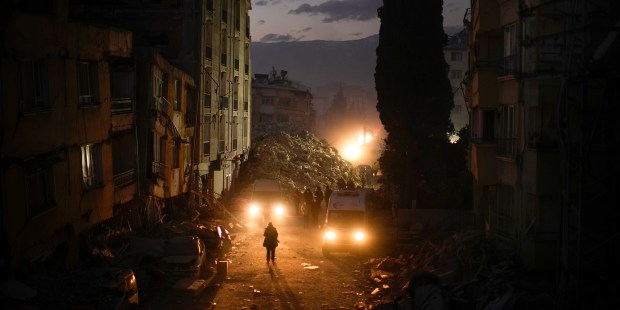 Francisco Seco / AP Images
Francisco Seco / AP ImagesReemerging from the rubble, again
While no significant earthquakes struck Antioch during the early church’s first days, the city has experienced nearly 60 earthquakes in its history. Ten of these had a magnitude of more than 7 and caused extensive damage and loss of life.
Despite these repeated natural disasters, Antioch is described as a resilient city that kept reemerging from the rubble. Roman historian Cassius Dio documented an earthquake from December 13, 115, where tens of thousands died, and the Emperor Trajan, who was visiting the city, barely escaped with his life. Survivors gathered in the open space of the hippodrome, similar to survivors gathered in the modern stadiums today.
Dio’s vivid description of the earthquake’s sights and sounds—grinding and breaking of timbers together with tiles and stones, accompanied by tremendous dust—resembles those experienced in Antakya’s recent earthquakes. In the aftermath of the disasters, the Romans arrested the bishop Ignatius and condemned him to death around this time, suggesting that perhaps they blamed Christians for the disaster.
By the time of Justinian, around 30 churches were situated in Antioch and its vicinity. The Byzantine chronicler of Antioch, John Malalas recounts another earthquake on May 29, 526, in which 250,000 persons perished. One of its architectural casualties was the great church built by Constantine the Great that stood seven days before it collapsed. Malalas concludes that the catastrophe was due to God’s wrath against the city, a trope that unfortunately failed to recognize nature’s own role in it.
Over the last 2,000 years, despite numerous imperial transitions, Christians have continuously lived in Antioch. These rulers and governments included the Persians, an Arab caliphate, the Byzantines, the Seljuk Turks, the Crusaders, and the Mamlūks. When this last group arrived in 1268, they lay siege to and later plundered the city in a campaign that killed 17,000 people and burned much of it to the ground, including numerous churches and a monastery outside the city.
Later, in 1517, the city came under the control of the Ottoman Empire. After this fell at the end of World War I, Antakya became a Syrian city before it rejoined Turkey in 1939. Over time, Antakya’s population began to increase and its infrastructure began to develop. At the time of the most recent earthquakes, its population boasted about 225,000 residents.
More recently, geopolitical events have challenged Antioch. When the Syrian civil war broke out in 2011, refugees flooded the city. After the US State Department issued a Level 4 warning not to travel to southeast Turkey, American visitors stopped coming. Then the pandemic hit, restricting most global travel and further reducing potential travel. With restrictions recently lifted, travel to Antioch was just experiencing a comeback.
What happens next remains to be seen. Who knows how many of the city’s traumatized residents will return?
“Antakya’s destruction is a loss to humanity,” Jan Estefan, one of the city’s few remaining Christians, told the AP. “We still want to live here. We have no intention of leaving.”
Though the archaeology museum sustained minimal injury, the earthquake significantly damaged the Greek Orthodox and Catholic church. The Jewish synagogue, which served a community that had dwindled to around a dozen, still stands, but its leader and his wife lost their lives when their apartment collapsed. Numerous mosques with historical and architectural significance, including the Habib-i Najjar, which was once a church, now exist as rubble.
As a biblical historian who has made my home in this part of the world, I hope that Antakya’s residents will return to live in new earthquake-proof structures, that the calls of watermelon sellers will resonate again through its streets, and that kunefe—its special cheese and honey dessert—will again be sold in local shops. I pray that the Christian community, rising like a phoenix from the rubble century after century, can resume its place as part of the social and religious mosaic of this singular city.
Mark Wilson is the founder and director of the Asia Minor Research Center in Antalya, Turkey. He is the author of Biblical Turkey: A Guide to the Jewish and Christian Sites of Asia Minor.




